Abstract
This research describes a method that initially establishes a mand repertoire as the first component in producing echoic and tact repertoires in young children with limited verbal repertoires. The subjects were 3 nonverbal children with autism, aged 2.5 to 3.5 years. The results indicated that establishing a mand repertoire as the starting point for echoic training produced the acquisition of an initial echoic repertoire in all 3 children within the first 10 sessions. Two of the children also began tacting during the same period. A mand repertoire was acquired by all subjects by the sixth session. Negative vocal behavior was rapidly reduced without the use of aversive contingencies by shaping inapproapriate vocalizations into acceptable vocal mands. Our discussion analyzes those contingencies that contribute to the effectiveness of the manding procedure and compares this procedure with the conventional vocal imitation model. We also discuss variables that may contribute to the long-term success of language training programs and describe strategies for preventing language delay in typical infants and children.
Full text
PDF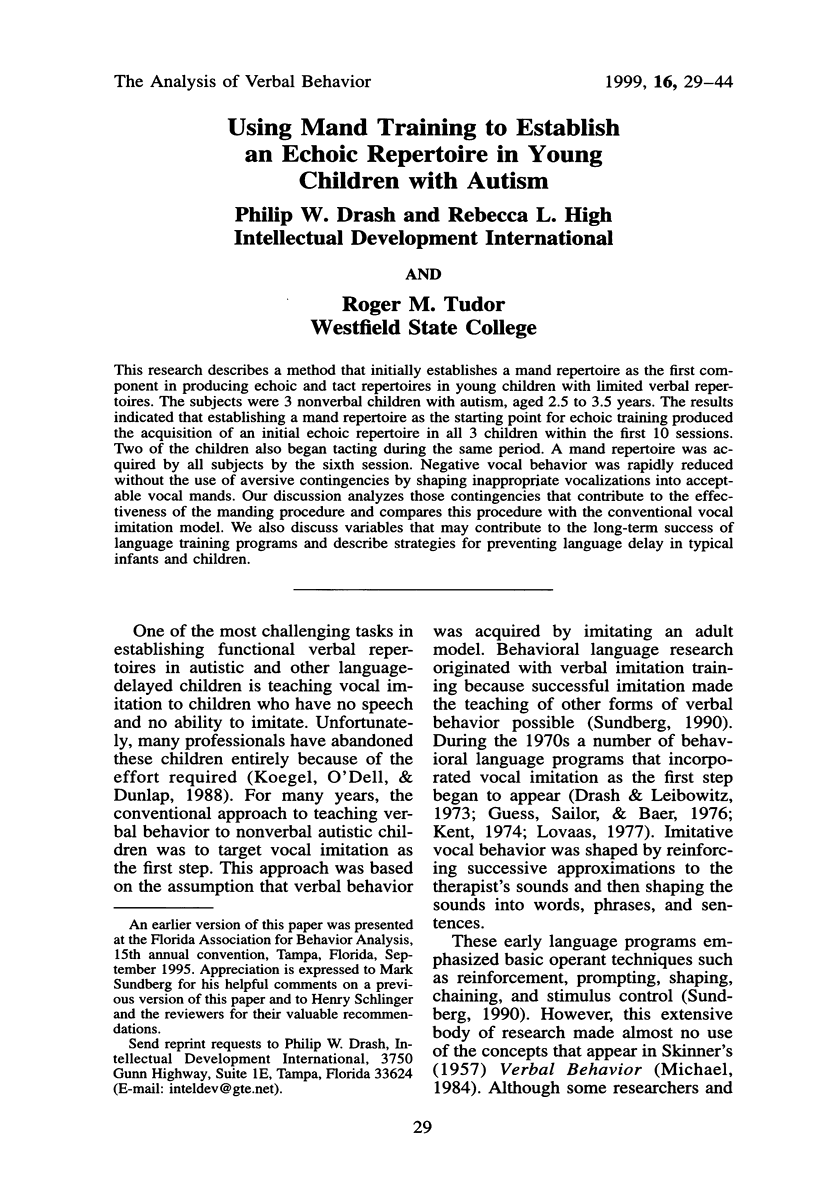
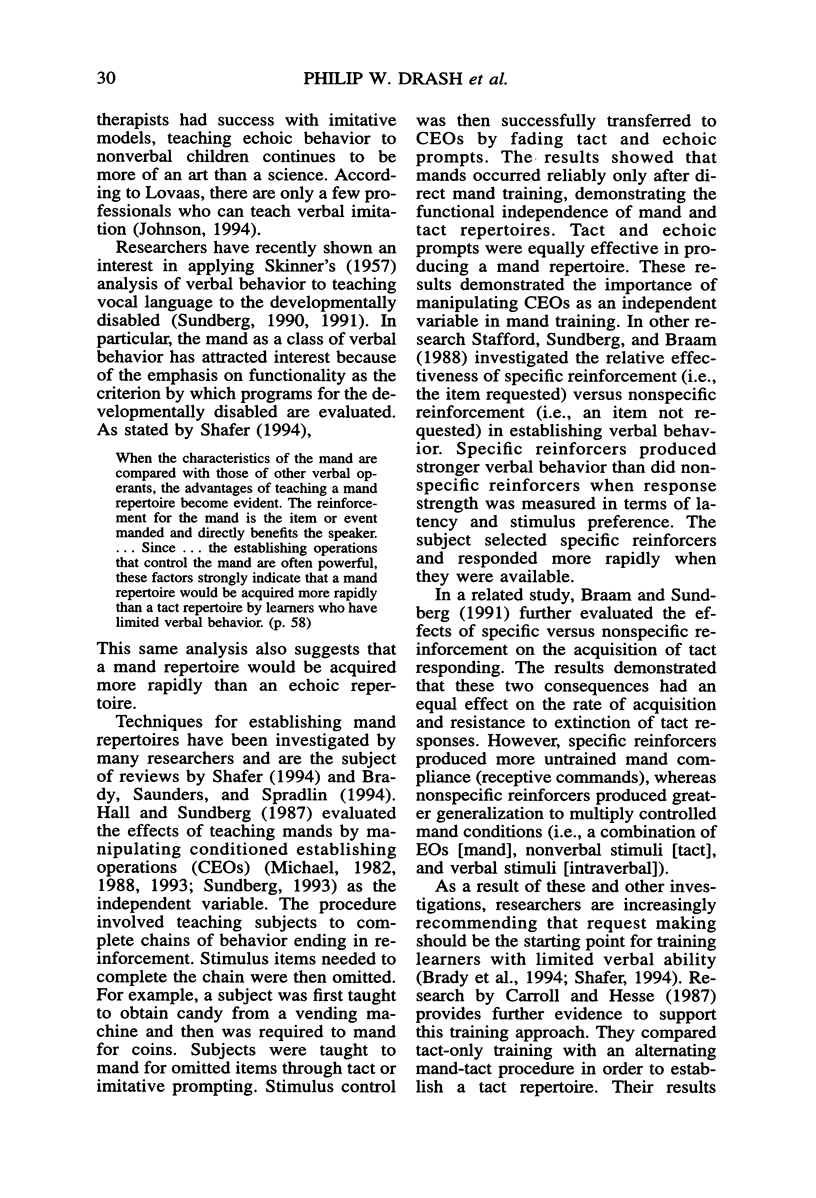

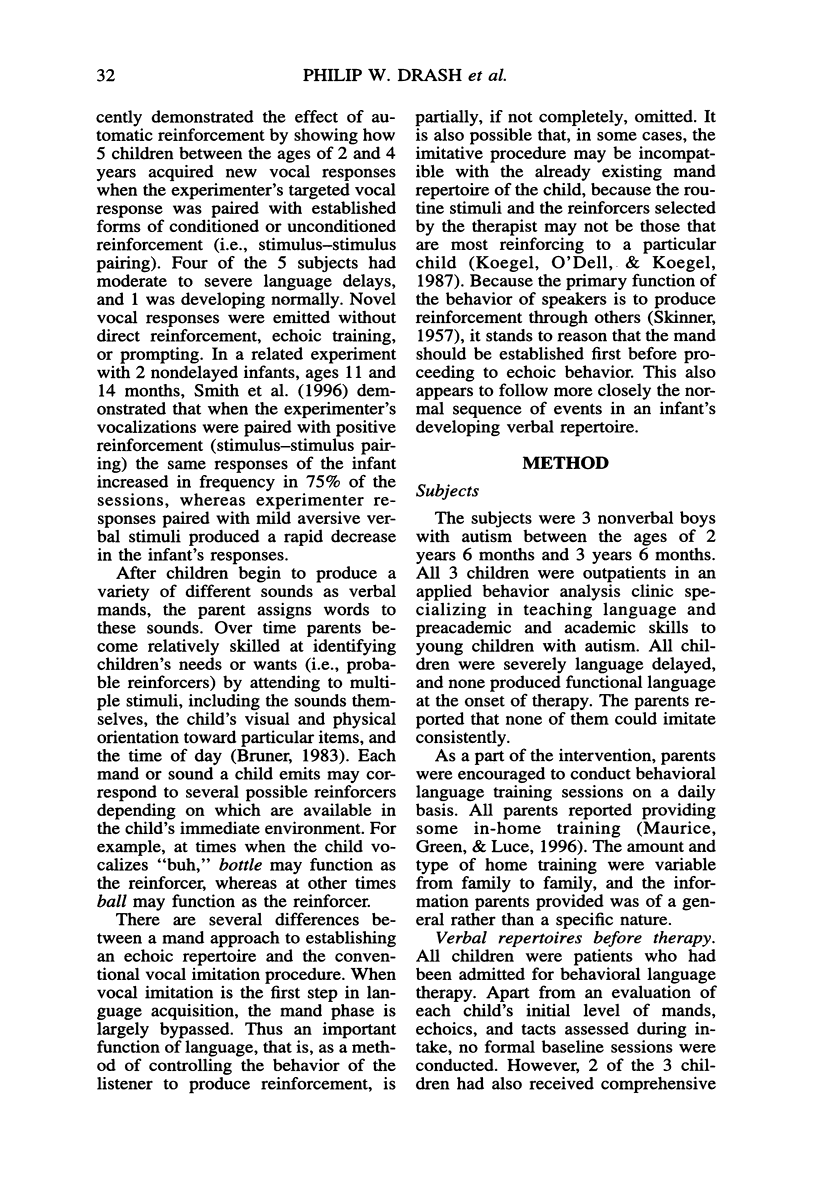
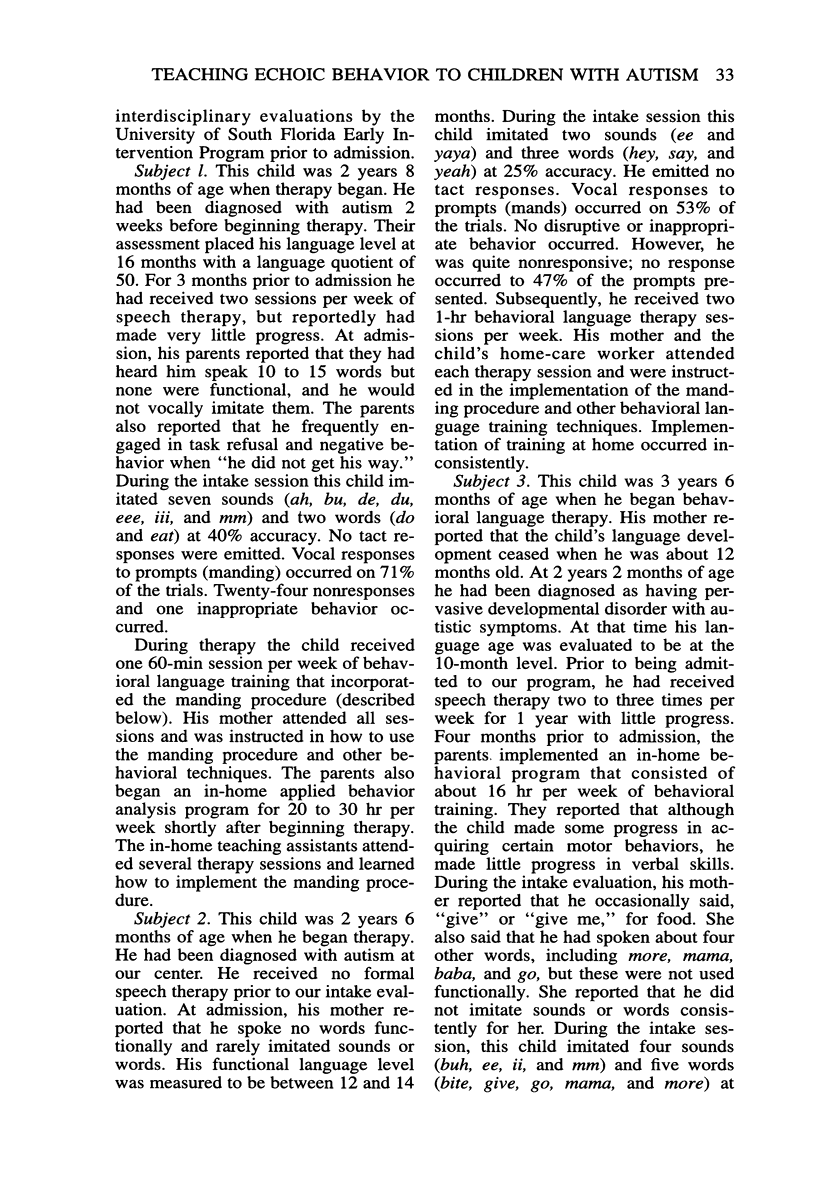
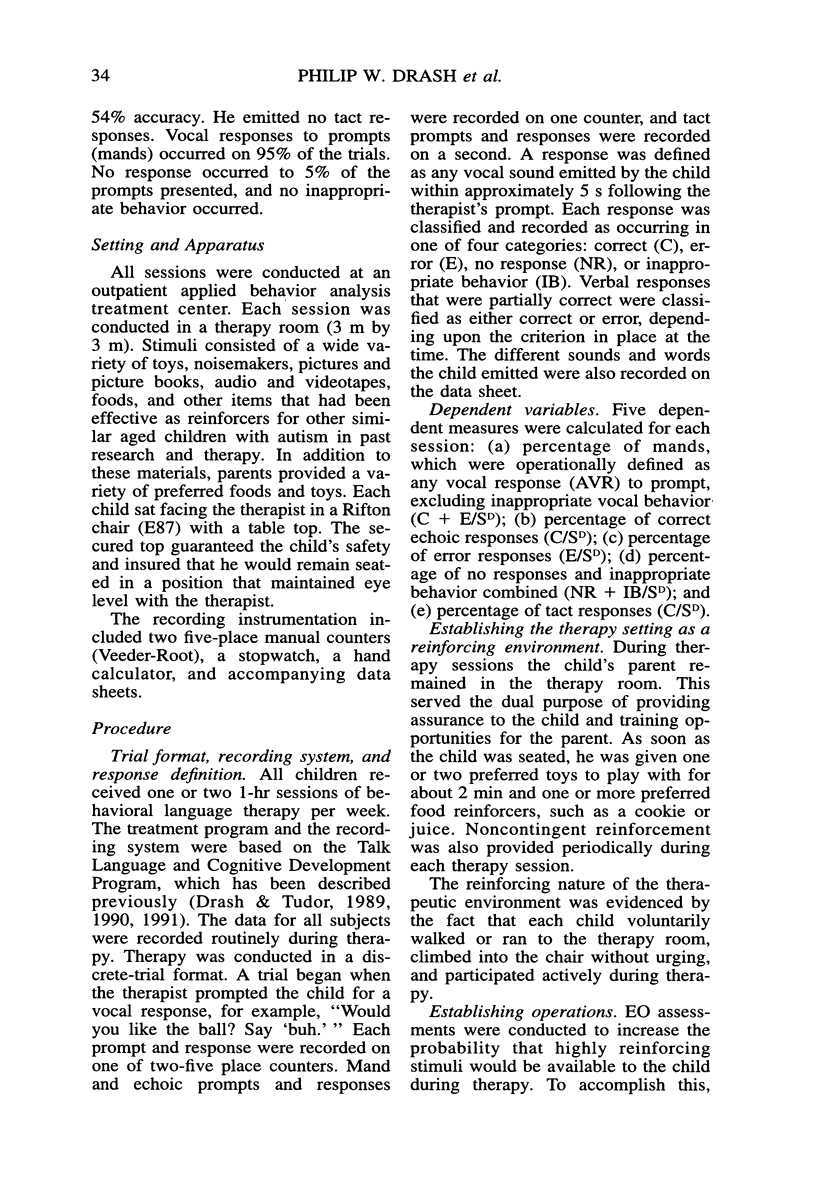
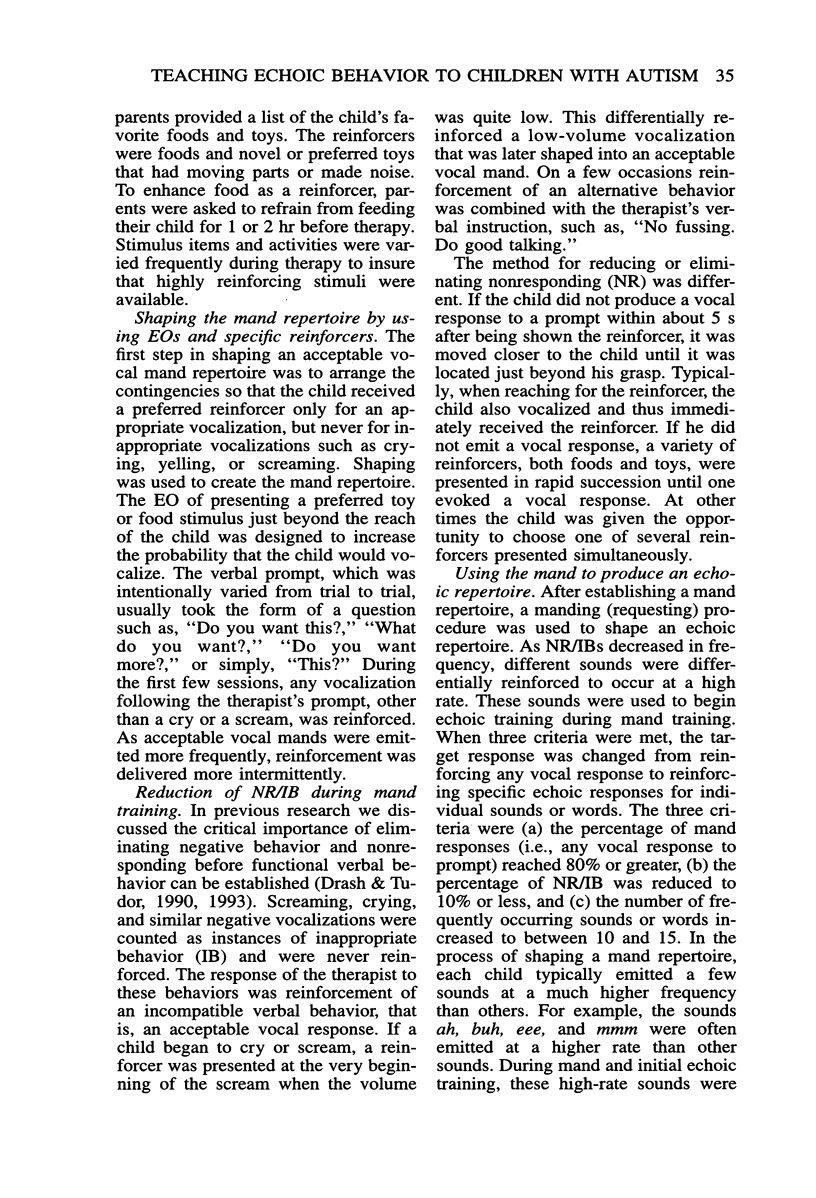
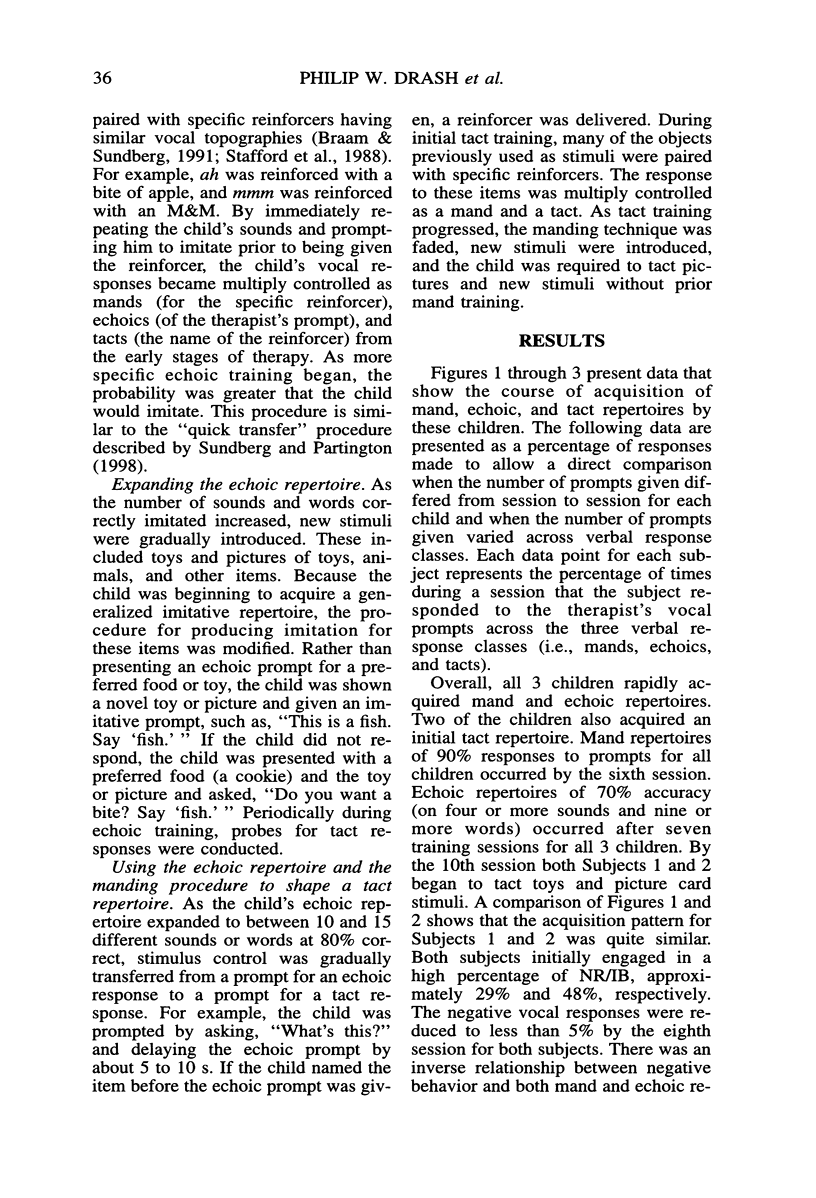

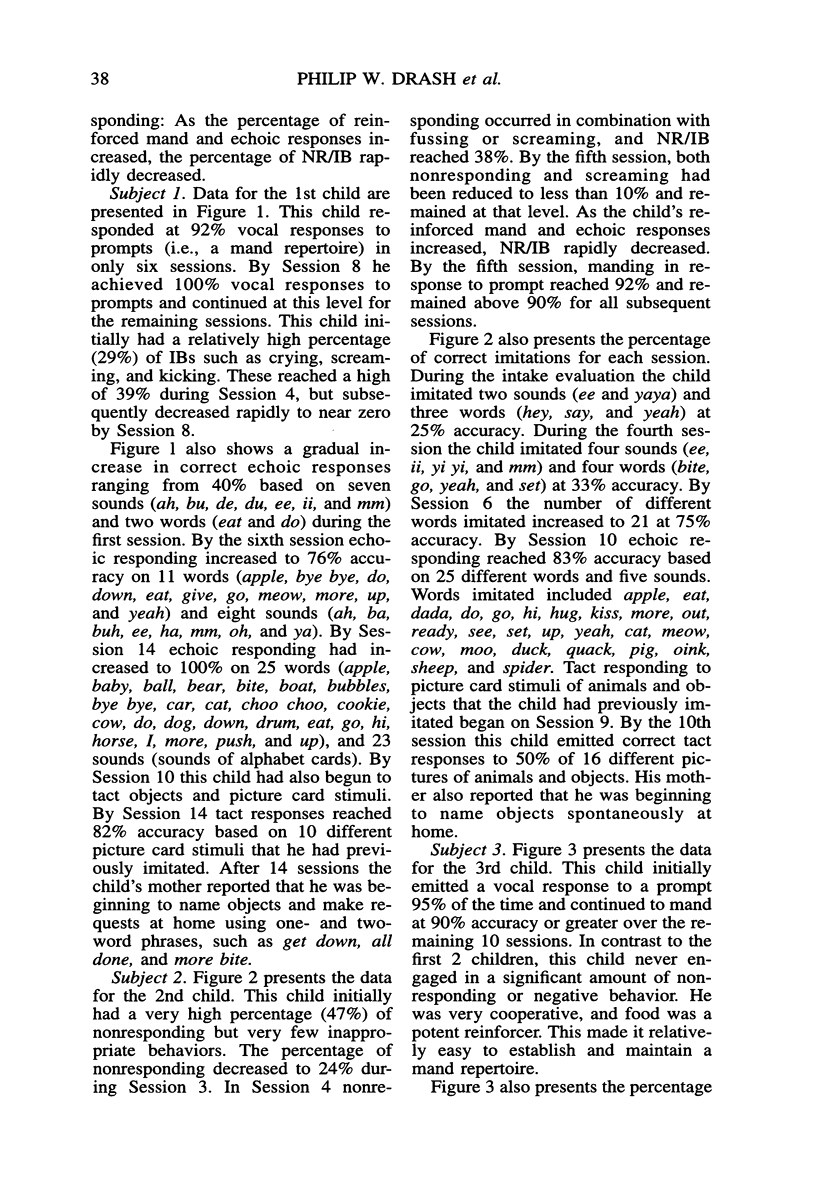
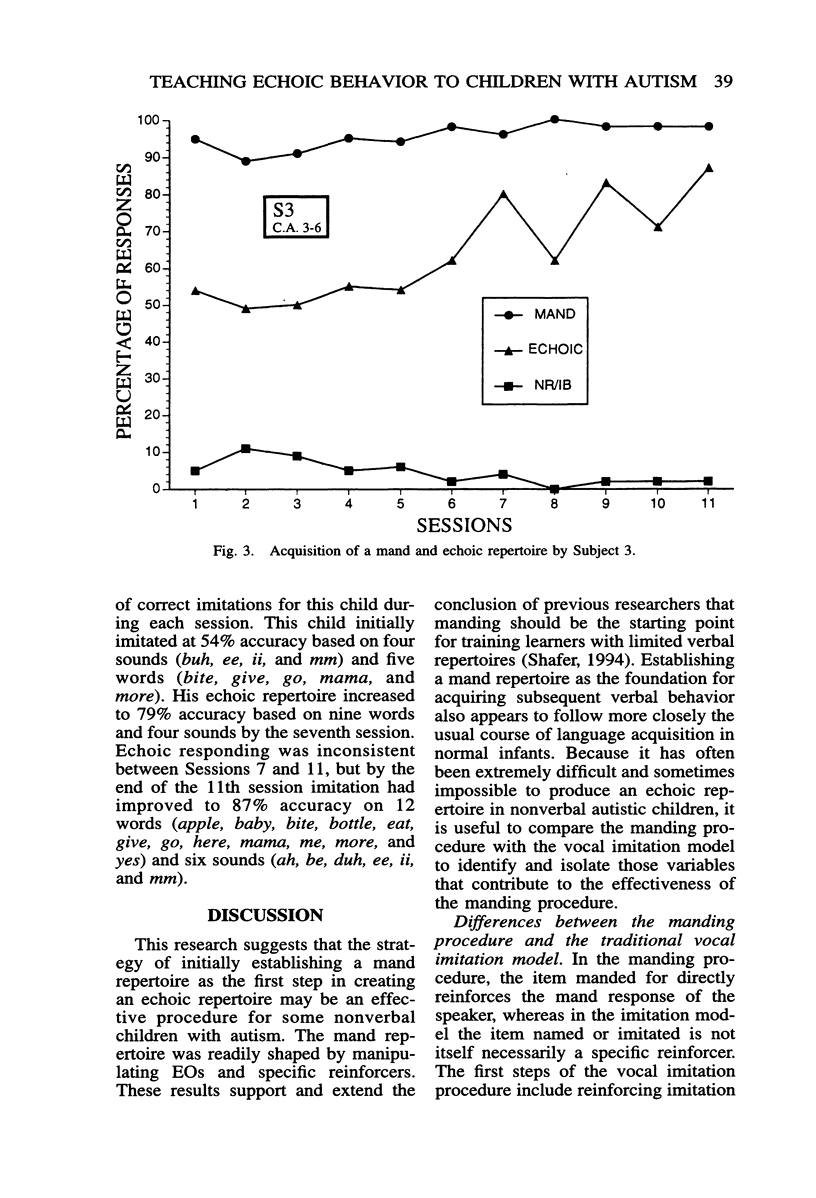
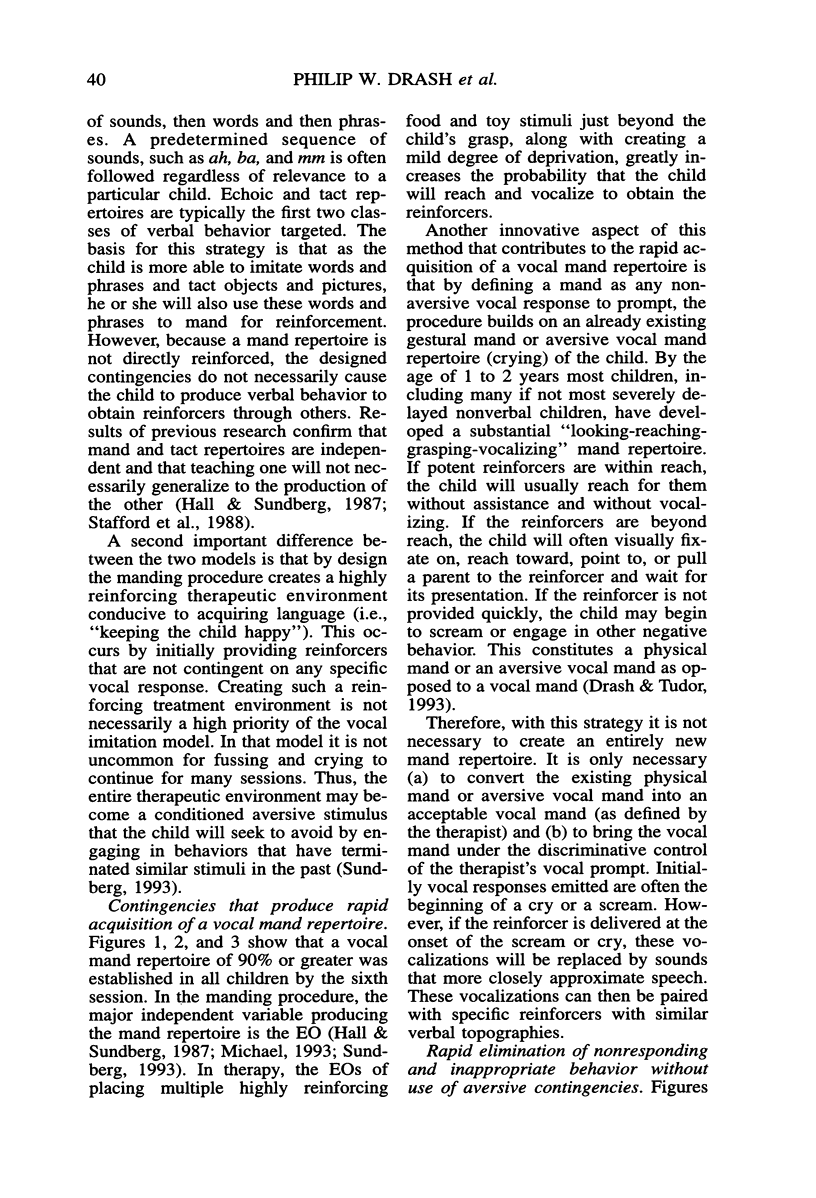
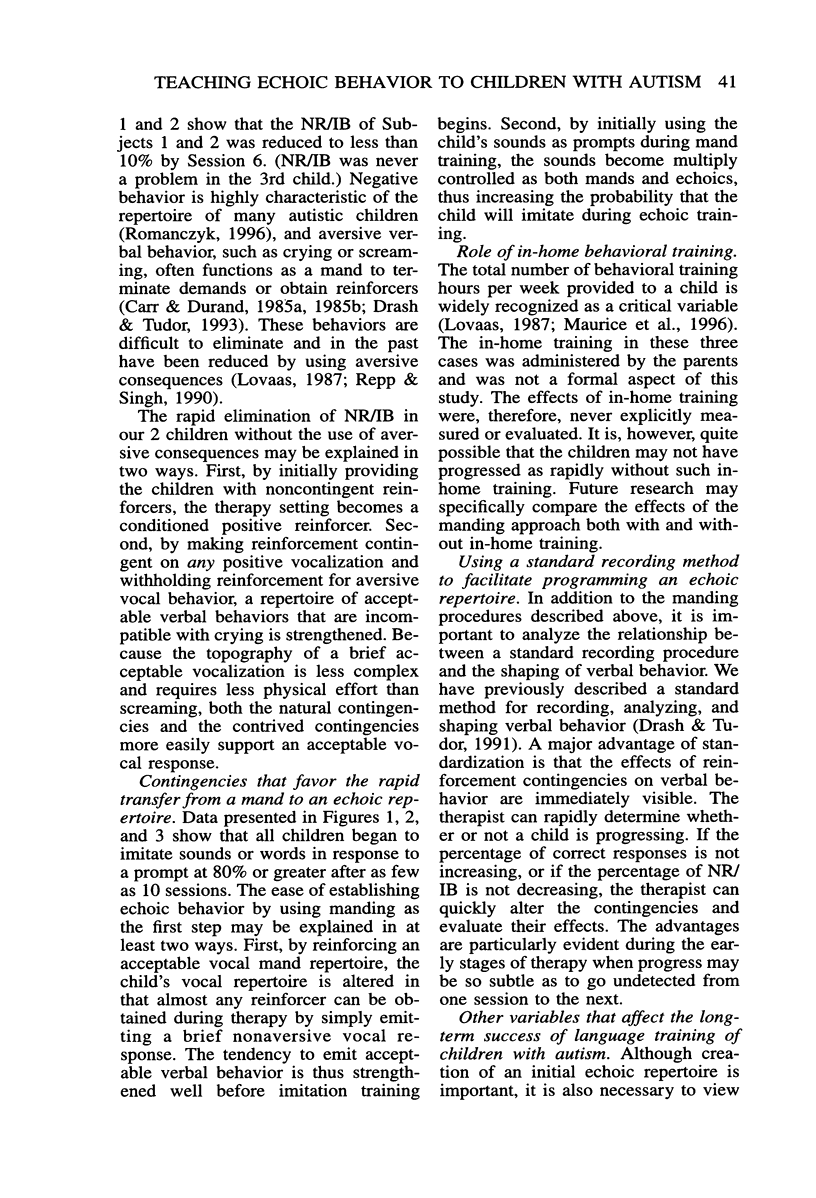

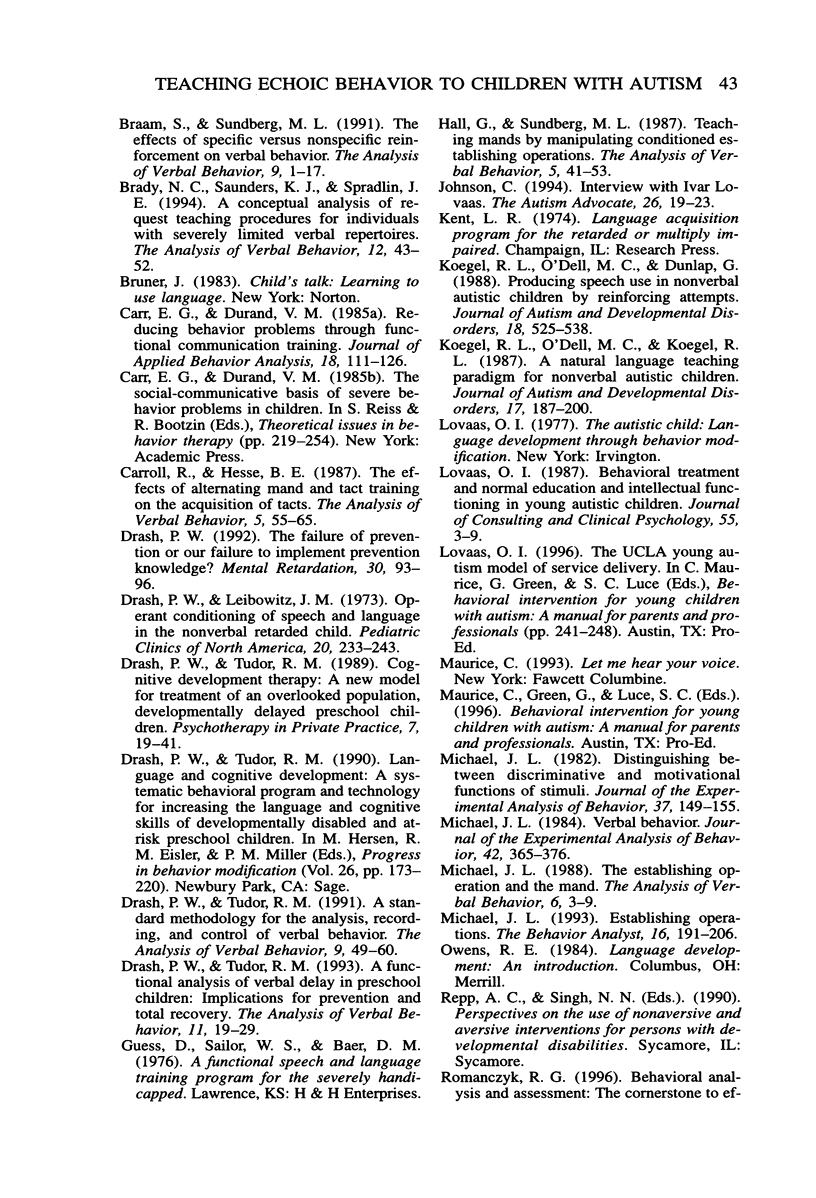
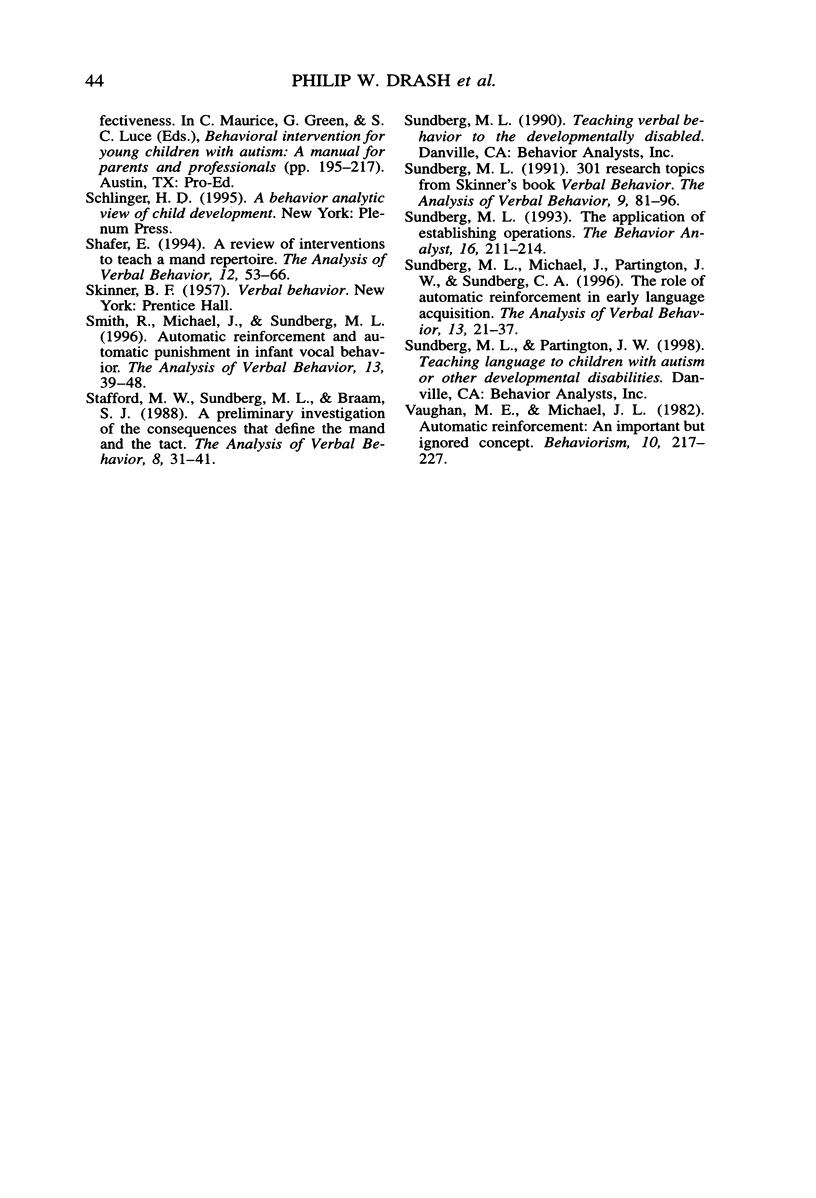
Selected References
These references are in PubMed. This may not be the complete list of references from this article.
- Andersson B. S., Vidal R. F., Sundberg M., Rajs J., Sótonyi P. Hydroperoxide-induced nucleotide degradation and adenosine formation in isolated rat cardiomyocytes. Toxicology. 1996 Jan 8;106(1-3):39–48. doi: 10.1016/0300-483x(95)03158-c. [DOI] [PubMed] [Google Scholar]
- Carr E. G., Durand V. M. Reducing behavior problems through functional communication training. J Appl Behav Anal. 1985 Summer;18(2):111–126. doi: 10.1901/jaba.1985.18-111. [DOI] [PMC free article] [PubMed] [Google Scholar]
- Drash P. W., Leibowitz M. Operant conditioning of speech and language in the nonverbal retarded child. Recent advances. Pediatr Clin North Am. 1973 Feb;20(1):233–243. doi: 10.1016/s0031-3955(16)32822-x. [DOI] [PubMed] [Google Scholar]
- Drash P. W. The failure of prevention or our failure to implement prevention knowledge? Ment Retard. 1992 Apr;30(2):93–96. [PubMed] [Google Scholar]
- Drash P. W., Tudor R. M. Language and cognitive development: a systematic behavioral program and technology for increasing the language and cognitive skills of developmentally disabled and at-risk preschool children. Prog Behav Modif. 1990;26:173–220. [PubMed] [Google Scholar]
- Koegel R. L., O'Dell M. C., Koegel L. K. A natural language teaching paradigm for nonverbal autistic children. J Autism Dev Disord. 1987 Jun;17(2):187–200. doi: 10.1007/BF01495055. [DOI] [PubMed] [Google Scholar]
- Koegel R. L., O'Dell M., Dunlap G. Producing speech use in nonverbal autistic children by reinforcing attempts. J Autism Dev Disord. 1988 Dec;18(4):525–538. doi: 10.1007/BF02211871. [DOI] [PubMed] [Google Scholar]
- Lovaas O. I. Behavioral treatment and normal educational and intellectual functioning in young autistic children. J Consult Clin Psychol. 1987 Feb;55(1):3–9. doi: 10.1037//0022-006x.55.1.3. [DOI] [PubMed] [Google Scholar]
- Michael J. Distinguishing between discriminative and motivational functions of stimuli. J Exp Anal Behav. 1982 Jan;37(1):149–155. doi: 10.1901/jeab.1982.37-149. [DOI] [PMC free article] [PubMed] [Google Scholar]
- Michael J. Establishing operations. Behav Anal. 1993 Fall;16(2):191–206. doi: 10.1007/BF03392623. [DOI] [PMC free article] [PubMed] [Google Scholar]
- Michael J. Verbal behavior. J Exp Anal Behav. 1984 Nov;42(3):363–376. doi: 10.1901/jeab.1984.42-363. [DOI] [PMC free article] [PubMed] [Google Scholar]
- Oni O. O., Stafford H., Gregg P. J. An investigation of the routes of venous escape from the diaphyseal marrow of the canine and rabbit long bones. Int J Microcirc Clin Exp. 1988 Jan;7(1):31–41. [PubMed] [Google Scholar]
- Sundberg M. L. The application of establishing operations. Behav Anal. 1993 Fall;16(2):211–214. doi: 10.1007/BF03392625. [DOI] [PMC free article] [PubMed] [Google Scholar]


